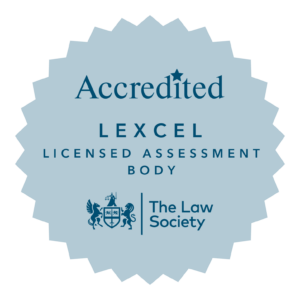In children law, habitual residence is just that: habitual. It is the central jurisdictional concept – both under pure domestic law (for example, section 3 (1)(a) of the Family Law Act 1986) and in international child protection law. Most commonly, it is put to work by Brussels II Revised, given BIIa’s exceptionally broad scope: taking in “the attribution, exercise, delegation, restriction or termination of parental responsibility” (article 1 (b), BIIa). There, article 8 predominates.
The judgment of Keehan J in AB V CD [2018] EWHC 1021 (fam) is helpful in that it reminds us of the basic concepts and applies them to a plain factual background. It is a helpful template case for the determination of disputed habitual residence. The facts were, in short form, these. In 2004, the mother moved from Spain to England. In 2006, the mother and father were married here. Some years after, in July 2016 and whilst the mother was pregnant, the parties travelled to Spain (the mother saying this was permanently to relocate; the father saying it was for a time-limited period) where, later in 2016, their child (“A”) was born. On 27 June 2017, the mother and A travelled to England (the mother saying this was to spend some time with the father; the father saying this was a move “back home”), where they were based until 30 November 2017. During that period in England, the mother and A twice travelled back to Spain and the family went also to a celebration in a third country. On 30 November 2017, the mother and A returned to Spain (the mother saying that this was a return “home”; the father saying that it was a pre-Christmas trip). The father moved between England and Spain until 6 January 2018, on which date the father returned to and (mostly) stayed in England and the mother in turn refused to return, with A, to England (the father saying this was against his wishes and the family’s plan).
From those facts, two questions arose: (1) did A lose his Spanish habitual residence and acquire an English habitual residence on or soon after 27 June 2017 and (2) if so, did A in turn lose his English habitual residence and re-acquire a Spanish habitual residence on or soon after 30 November 2017?
It is often the case that oral evidence is not required, despite a backdrop of disputed facts. One can – one often will – instead employ a summary process under which, to adopt the words of Hayden J, the very discipline of preparation is likely to clarify where the child is habitually resident. This was such a case.
The legal principles were helpfully distilled on behalf of the applicant father. That summary is adopted by Keehan J, at [5], and is worth reading in full,
“(i) Habitual residence is essentially a question of fact. (‘The essentially factual and individual nature of the inquiry should not be glossed with legal concepts which would produce a different result from that which the factual enquiry would produce’ – per Baroness Hale in A v A, para 54(vii)). ‘A gloss is a purported sub-rule which distorts application of the rule’ – per Lord Wilson in Re B
(ii) Habitual residence requires ‘not the child’s full integration in the environment of the new state but only a degree of it’ – Lord Wilson, Re B
(iii) It is just about conceivable for a child’s habitual residence to be changed unilaterally, even where both parents share parental responsibility and one of them does not agree to the change (the supposed ‘rule’ against this in the older authorities is, seemingly, no longer good law).
(iv) Parental intention is a relevant factor but is not wholly determinative.
(v) A (young) child will most usually have the same habitual residence as their carer; this is all the more so when the child is still an infant.
(vi) The concept is ‘child-centered’ – it is the child’s integration which is being assessed. Thus, while the environment of an infant or young child will usually be determined by their main carer(s), this is not necessarily the case with a school-age child, still less an adolescent.
(vii) There is no minimum time required before a new habitual residence can be established; it depends on the facts of the particular case, but it may be acquired in as little as one day.
(viii) It will only be in very unusual cases that a child has no habitual residence – usually there will be a seamless ‘transfer’. In Re B, the analogy of a see-saw was used to illustrate this process. It was suggested there that the deeper a child’s integration in the old state, ‘probably the less fast his achievement of the requisite degree of integration in the new state’ [para 46] – but Lord Wilson went on to say that if there has been a great degree of pre-planning, and if all the ‘central members’ of a family have moved together with a child, then probably the sufficient degree of integration could take place faster. In Re B itself, Lord Wilson said that the question the judge ought to have asked herself at first instance, when considering whether English habitual residence had been lost, was ‘whether B had achieved the necessary degree of disengagement from her English environment’; and conversely, ‘whether she had achieved the requisite degree of integration in the environment of Pakistan’
And in that discipline – the discipline of setting out (plainly) the facts and considering (simply) the legal principles – lay the answer. There was no need to determine the ancillary and heavily contested factual disputes. The child’s habitual residence was at the relevant time (indeed, at all times) in Spain. The return orders previously made by Keehan J were set aside, the certificate for enforcement discharged, the father’s pending application for orders under section 8 of the CA 1989 dismissed and the mother and child permitted to remain in Spain.
By Holly-Brie Jervis


